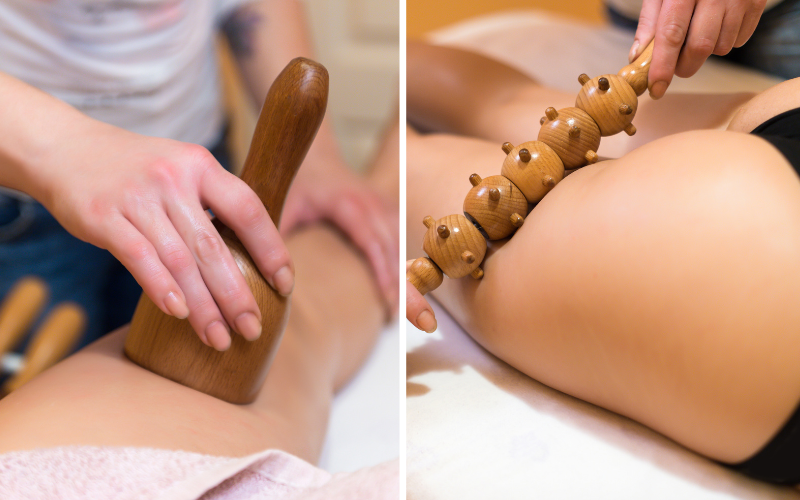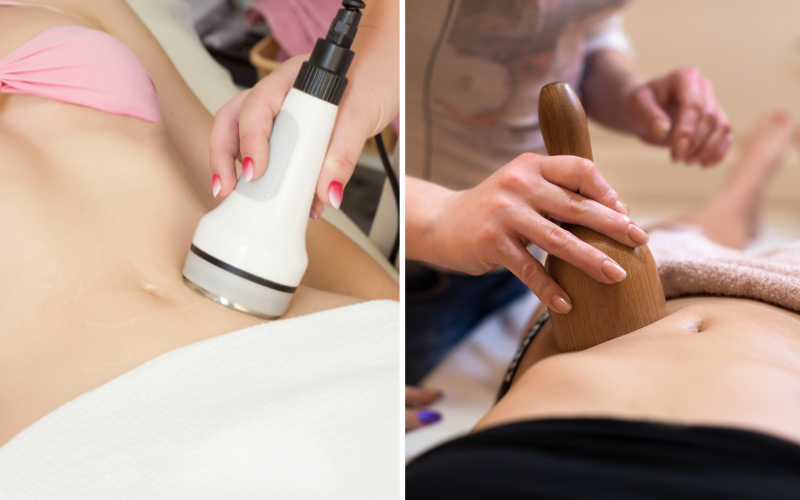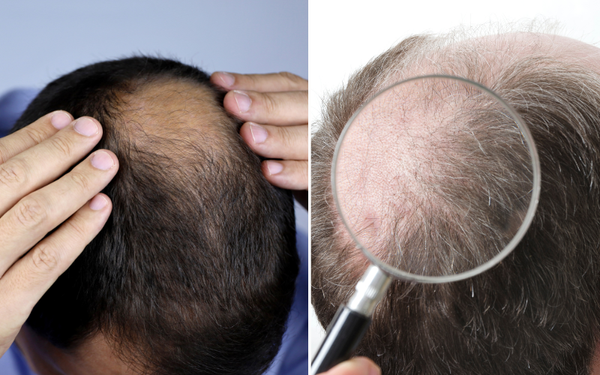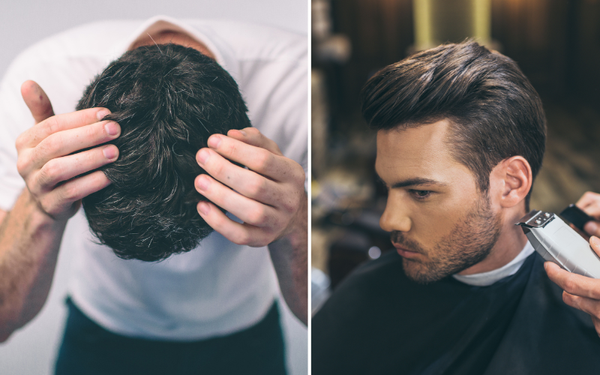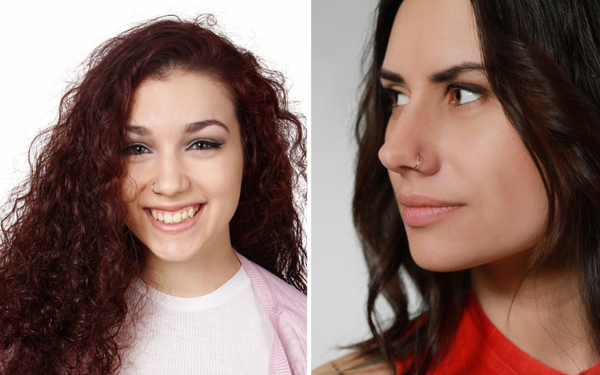What are the pros and cons of body sculpting? Are you curious about this topic? In our no-fluff guide, we tackle the realities of achieving your desired body shape—balancing the appeal of minimal invasiveness and quick recovery against the tangible costs and risks. Get the critical insights here to help you navigate the complex landscape of body contouring options.
Key Takeaways
- Body sculpting, divided into surgical and non-surgical procedures, offers various methods for fat elimination and body contouring, wherein non-surgical options are less invasive with fewer risks.
- Despite its many benefits like minimal downtime and cost-effectiveness, body sculpting is not a weight loss solution and is best for targeting specific areas with stubborn fat rather than large-scale fat reduction.
- Maintaining body sculpting results requires a healthy lifestyle with regular exercise and a balanced diet, and choosing the right procedure involves professional consultation to align with personal goals and needs.
Understanding Body Sculpting

Body sculpting, also known as body contouring, refers to a suite of cosmetic procedures designed to improve the appearance of various areas of the body by eliminating stubborn fat and shaping body contours. Various methods are utilized in body sculpting techniques to target fat cells. Some body contouring procedures, like lipolysis, use waves to heat and destroy fat, while others, such as cryolipolysis, freeze the fat cells to eliminate them.
Surgical and non-surgical are the two categories into which these procedures can be divided. Non-surgical body sculpting options include treatments like cryolipolysis, low-level laser therapy, and radiofrequency. These treatments are less invasive compared to surgical methods, making them an appealing choice for many patients.
Non-Surgical Options
A variety of benefits are offered by non-surgical body sculpting treatments. Among them are:
- Cryolipolysis: involves freezing fat cells to naturally eliminate them from the body
- Laser treatment: uses laser energy to target and eliminate excess fat
- Red light therapy: employs low-level laser therapy to impact fat and cellulite reduction.
The effectiveness of these techniques in reducing unwanted fat has been demonstrated. They are considered less invasive and carry fewer risks compared to surgical options, making them an attractive choice for individuals seeking a more subtle approach to body contouring.
Surgical Options
Surgical body sculpting options, conversely, yield more dramatic results. Procedures like liposuction and tummy tucks, for instance, can significantly alter a person’s appearance. Liposuction dislodges fat from specific areas of the body and removes it, aiding in contouring and sculpting the body.
A tummy tuck, also known as abdominoplasty, offers the following benefits:
- Eliminates surplus skin
- Strengthens muscles in the abdominal region
- Leads to a more toned abdomen
- Firmer skin
- Flatter stomach
These surgical options, including common body contouring procedures and body contouring surgery, offer considerable changes in body contour and can be a key component of a holistic sculpting approach.
Advantages of Body Sculpting
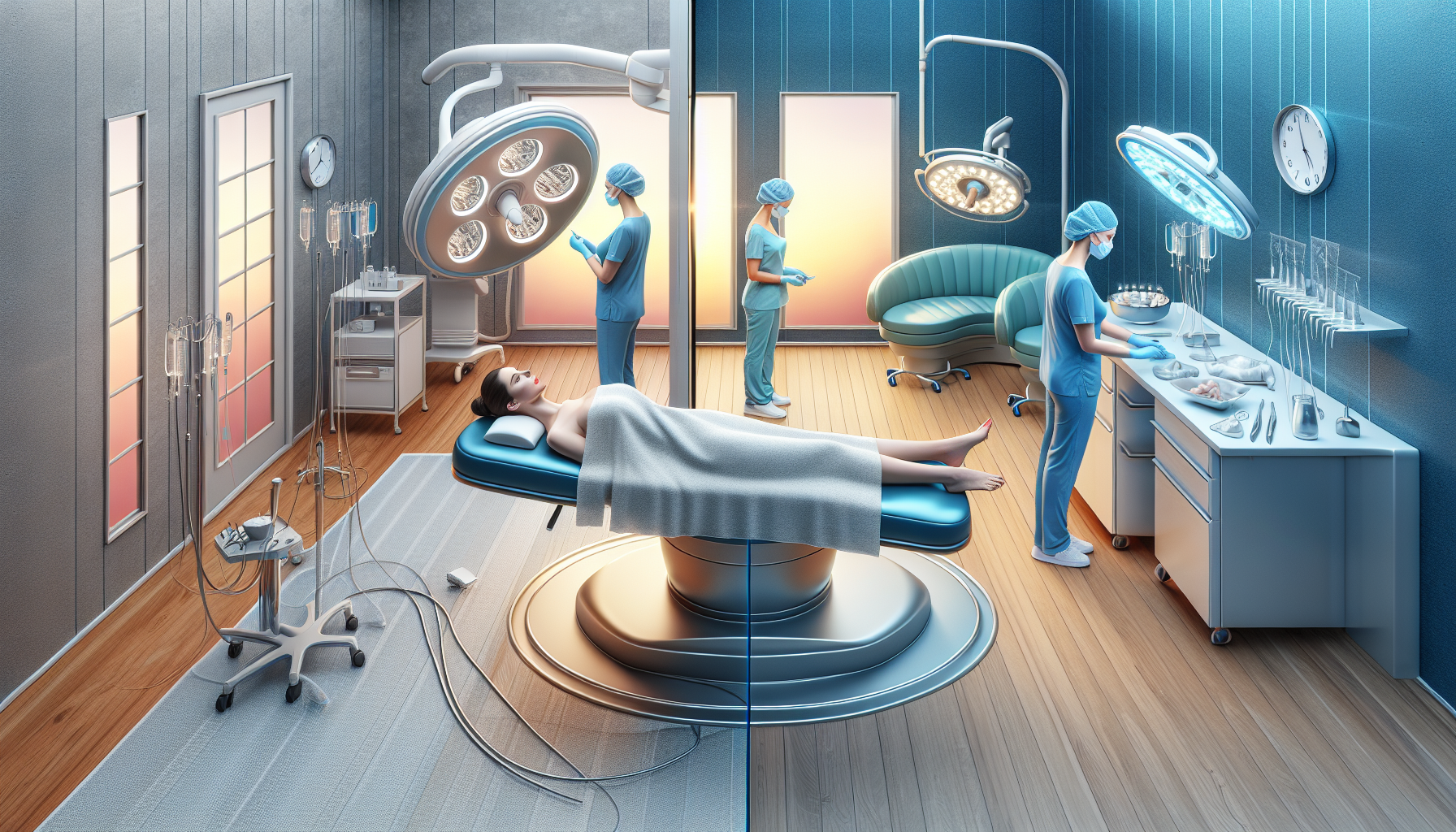
A plethora of advantages is offered by body sculpting. Some of these advantages include:
- Minimally invasive procedures that require no incisions or anesthesia
- Minimal downtime
- Ability to address multiple problem areas at once
- A preferable choice compared to surgical body contouring
A high level of customization is also offered by body sculpting treatments, including body contouring treatment. They provide non-invasive solutions for fat reduction, muscle toning, and muscle contraction stimulation. This flexibility allows patients to focus on specific areas of concern and achieve treatment results that align with their unique aesthetic objectives.
Finally, due to reduced hospital stays and anesthesia needs, along with shorter recovery times, these procedures typically prove more cost-effective than traditional surgeries.
Minimally Invasive
Minimally invasive techniques like cryolipolysis break down fat cells using extreme cold, while other non-invasive procedures target the skin surface without making incisions. These techniques offer benefits including the avoidance of general anesthesia, absence of scars, minimal downtime, and the ability to address multiple problem areas at once, compared to surgical body contouring.
Body sculpting procedures, like non-invasive fat removal, are typically less invasive than traditional surgeries. They require smaller incisions and have shorter recovery times, eliminating the necessity for extended hospital stays or prolonged periods of downtime. The benefits of body sculpting procedures include:
- Less invasive nature
- Smaller incisions
- Shorter recovery times
- Reduced risks and complications
- Avoidance of surgical methods such as large incisions
- Lower chances of infections, excessive bleeding, and other common surgical complications.
Quick Recovery Time
Compared to traditional surgical procedures, non-invasive body sculpting methods typically offer shorter recovery times. After body sculpting, patients may experience:
- Soreness
- Tenderness
- Bruising
- Swelling
These symptoms may last for a few days to weeks, whereas traditional surgeries may necessitate several weeks for light activity.
The recovery time can be influenced by factors such as the extent of bruising and swelling, the patient’s age, and their overall health status. Patients can facilitate recovery after body sculpting procedures by avoiding overexertion, maintaining good nutritional habits, keeping affected areas elevated to reduce swelling, staying hydrated with water and electrolytes, and considering lymphatic massages to enhance circulation and facilitate healing.
Customizable Treatments
Customization in body sculpting treatments allows for a personalized look through targeting specific body areas. A nonsurgical body sculpting procedure is used to eliminate stubborn fat without the need for surgery, scarring, or downtime.
When customizing body sculpting treatments, factors such as:
- the type of treatment (non-invasive or surgical)
- age
- genetic predisposition
- hormonal balance
- desired results (fat reduction vs. skin tightening)
- risks associated with the procedure
are typically taken into account.
Customization in body sculpting plays a crucial role in targeting specific areas of the body, thereby assisting individuals in achieving their desired results.
Cost-Effectiveness
Compared to traditional surgeries, body sculpting procedures offer several advantages:
- They are generally more cost-effective, as they are usually less expensive than traditional surgeries.
- They often require shorter hospital stays, reducing the cost of hospitalization.
- Anesthesia is typically not required or is minimal, further reducing costs.
- Recovery times are shorter, allowing for less time off work and associated costs.
These factors make body sculpting procedures a more affordable option for many individuals.
The typical cost of non-surgical body sculpting procedures falls within the range of $1,200 to $4,000, which varies based on the specific treatment and the targeted area of the body. It’s important to note that cosmetic surgeries such as body sculpting are generally not covered by insurance because they are elective and not deemed medically necessary.
Disadvantages of Body Sculpting
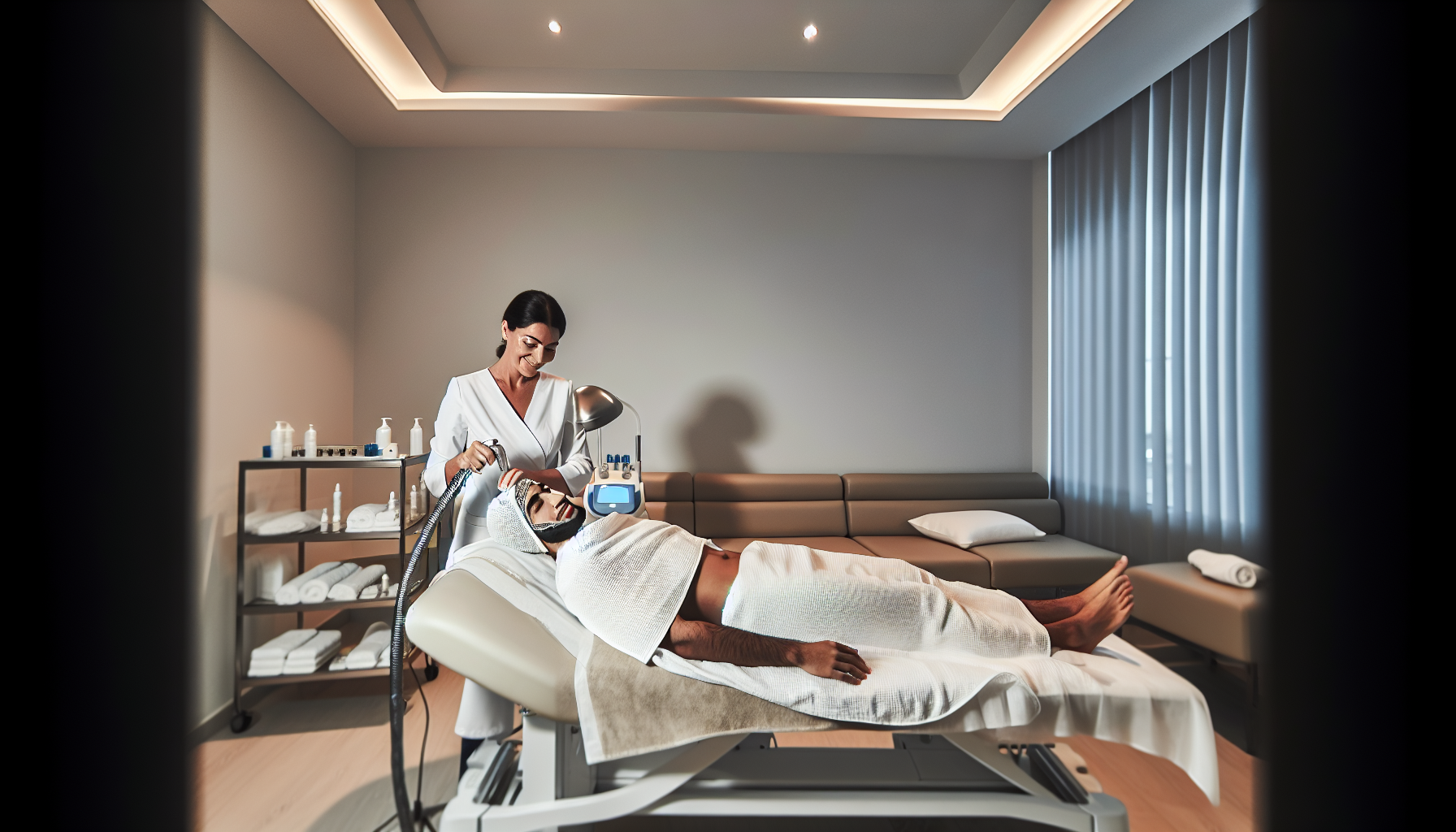
As with any procedure, body sculpting comes with its disadvantages. These technologies may have limitations in treating large areas and may carry some risks. They are primarily intended for smaller, stubborn areas of fat and may not fully address concerns related to excess skin or significant fat reduction needs.
The full results from body sculpting take time to become apparent, often requiring approximately 10-12 weeks, due to the body’s natural process of eliminating the targeted fat cells and individual healing factors. Moreover, body sculpting is not an effective method for weight loss as it focuses on targeting specific pockets of stubborn fat rather than contributing to overall weight reduction.
Finally, potential side effects of body sculpting procedures can include redness, swelling, bruising, as well as more severe issues such as scarring, wounds, and internal bleeding.
Limited Treatment Areas
Treatments of large areas may be limited by body sculpting technologies. They are primarily intended for smaller, stubborn areas of fat and may not fully address concerns related to excess skin or significant fat reduction needs.
Certain body areas may not be suitable for body sculpting treatments due to the potential for:
- pain
- discomfort
- redness
- swelling
- bruising
- nodules
Additionally, noninvasive body contouring technologies are not risk-free and their results may only be temporary.
Gradual Results
It often takes approximately 10-12 weeks for the full results of body sculpting to become apparent. This is due to the body’s natural process of eliminating the targeted fat cells and individual healing factors.
One effective way to monitor the progress of body sculpting over time is by taking photos at regular intervals. This visual documentation can help in celebrating small improvements throughout the transformation journey.
Not a Weight Loss Solution
Due to its focus on specific areas and the removal or destruction of fat cells for lasting contour improvement, body sculpting is not considered a weight loss solution. Its purpose is not to serve as a weight loss solution.
Body sculpting procedures are designed to focus on toning and refining the figure, while weight loss treatments primarily aim to reduce fat and muscle. Therefore, body sculpting should not be used as a substitute for a healthy diet and regular exercise.
Possible Side Effects
Common after-effects of body sculpting treatments can include:
- Redness
- Swelling
- Bruising
- Numbness
- Loss of sensation in the treated area
These side effects are generally temporary and tend to resolve within a few days to weeks.
Surgical body sculpting procedures carry risks such as anesthesia complications, bleeding, blood clots, and excessive or widened scars, while non-surgical procedures can lead to side effects like redness, swelling, bruising, tingling, and skin sensitivity.
How to Choose the Right Body Sculpting Procedure

Finding the right body sculpting procedure involves professional consultation and comparison of treatment options to best fit your needs and goals. Consulting a professional is crucial when choosing a body sculpting procedure as they can offer personalized guidance based on your specific needs, helping you make a well-informed decision.
During a professional consultation, guidance from a certified body sculpting specialist can be expected. The specialist will engage in a discussion about your specific requirements and assist in identifying the most appropriate procedure for you.
Consultation with a Professional
To identify the most appropriate body sculpting treatment for each individual, consulting with a qualified professional is crucial. Professionals consider factors such as:
- the individual’s body analysis
- goals
- budget
- available treatments
when determining the best body sculpting technique.
A body sculpting professional should have completed a body sculpting training course and obtained certification. They may also ask questions to better understand the individual’s needs and preferences.
Comparing Treatment Options
Consulting with a professional for information on the effectiveness, risks, and costs is important when comparing different body sculpting procedures. This comparison will help you understand which procedure aligns best with your specific goals and situation.
Surgical body sculpting treatments generally produce more significant and enduring results in comparison to non-surgical methods. The benefits of surgical treatments include:
- Visible results almost immediately after the procedure
- Long-lasting effects
- More precise and targeted sculpting
- Ability to address larger areas of concern
On the other hand, non-surgical procedures may take longer to achieve the final outcome and may require multiple sessions for optimal results, compared to a surgical procedure.
Maintaining Body Sculpting Results

Maintaining body sculpting results requires lifestyle changes such as:
- Commitment to meal planning
- Adherence to a healthy diet
- Regular physical activity
- Habits like staying hydrated, ensuring adequate sleep, and managing stress levels.
Regular exercise, which helps prevent future weight gain, tones muscles, continually burns fat, strengthens muscles, and prevents new fat cell accumulation, is crucial in maintaining body sculpting results.
Adhering to a nutritious, well-balanced diet and exercise regimen, devoid of refined and high sugar or fat processed foods, is necessary to sustain body sculpting outcomes.
Real-life Examples and Success Stories
The crucial role of real-life examples and success stories is to demonstrate the improved appearance and increased confidence achievable with body sculpting treatments. For instance, some have shared positive results from various treatments like SculpSure and noninvasive body contouring treatments, often highlighting how these changes have enhanced their lives.
Several celebrities, including:
- Chris Hemsworth
- Chris Pratt
- Jake Gyllenhaal
- Paul Rudd
- Tom Hardy
- Christian Bale
- Bradley Cooper
have demonstrated remarkable body sculpting transformations. These individuals have often undergone substantial physical changes for movie roles, frequently utilizing body contouring treatments like Emsculpt to attain their sculpted physiques.
Summary
Body sculpting is a powerful tool for enhancing and refining your physique. Whether through surgical or non-surgical methods, these treatments offer a range of benefits, from being minimally invasive and quick recovery times to highly customizable and cost-effective options. However, it’s essential to remember that these treatments are not weight loss solutions, and maintaining the results requires a commitment to a healthy lifestyle.
While body sculpting does have its limitations and potential side effects, the transformative power it holds is undeniable. From everyday people to Hollywood stars, numerous individuals have experienced improved appearance and increased confidence through body sculpting. It’s important to remember that the journey to a desired body shape is a personal one. With the right guidance, information, and commitment, body sculpting can be an effective step towards achieving your body goals.
Frequently Asked Questions
What are the disadvantages of body sculpting?
Body sculpting may not always be effective or long-lasting.
Is Body Sculpting good for you?
Yes, body sculpting can help make your muscles more visible, giving your body a more defined and healthy appearance, ultimately contributing to improved fitness and overall well-being.
What are the negatives of CoolSculpting?
CoolSculpting may lead to temporary swelling, redness, numbness, bruising, and at times, skin irregularities. In rare cases, there might be mild to moderate pain, nerve pain, and a small risk of paradoxical fat hyperplasia, where fat cells grow bigger instead of smaller. It's important to be aware of these potential negatives before considering the procedure.
What is body sculpting?
Body sculpting, or body contouring, is a cosmetic procedure that aims to improve the appearance of the body by removing stubborn fat and shaping contours.
What are the benefits of body sculpting?
Body sculpting provides several advantages, such as customizable treatments, quick recovery times, and cost-effectiveness, making it a popular choice for many.
You Might Also Like...
